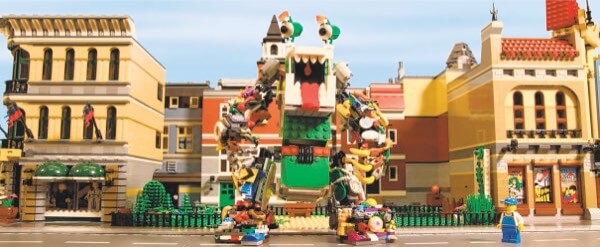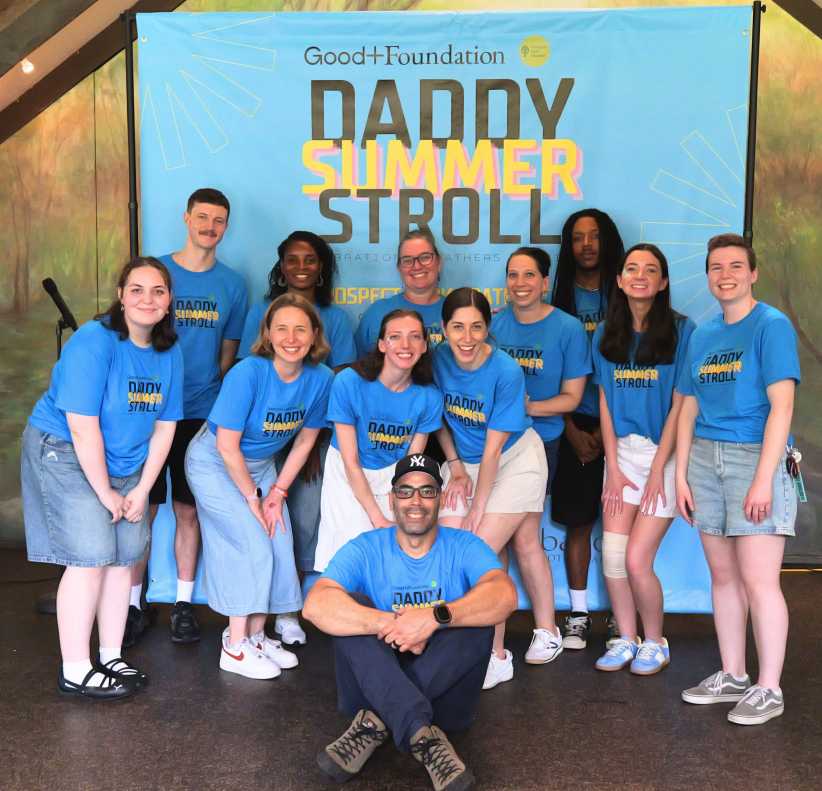By Tammy Scileppi
Legos aren’t just for kids. Turns out there’s an entire fan club out there made up of grownups who are hooked on those colorful little interlocking blocks. After years spent in hiding, these brave souls have finally emerged from the shadows, and believe it or not, have even given themselves a name. Adult Fans of Lego® or AFOLs, can’t seem to get enough. They just love to build — and to display their creations.
Even celebs like Brad Pitt and David Beckham have rediscovered this ageless medium. Some say it may serve as a creative outlet that can help bring out your pent-up designer mojo or reveal your inquisitive inner child.
If you or someone you know happens to be an AFOL, you’re probably already aware of the wide selection of grownup-oriented Lego sets on the market, featuring complex, high-piece-count models that may be too difficult for younger kids but offer high display appeal — such as the Ultimate Collector Series with Star Wars and Harry Potter themes. And what true Lego explorer could ever say no to a Lego Architecture Burj Khalifa Dubai, or Empire State Building set from Santa?
So, who are these AFOLs? They seem to represent a growing percentage of the population who have gone beyond the recommended age range printed on Lego boxes (i.e. 7-14).
Some are parents, who have watched and helped their children build toppling Lego towers, while secretly wishing that one day, they too could design their very own cool creations. Others, like Astoria resident and Lego filmmaker David Pagano—a devoted AFOL— grew up playing with those tiny pieces, and just never wanted to stop.
Pagano, 31, recently celebrated the release of his newest project
“The Lego Animation Book,” which he penned along with co-author and AFOL buddy Dave Pickett. The signing event was hosted by the popular Astoria Bookshop (one of Queens’ only remaining non-religious bookstore), where the filmmaker-turned-author introduced curious locals and Lego enthusiasts to his craft and talked about the amazing art of bringing Lego creations to life with stop-motion animation.
“I’ve been a fan of Lego since I received my first set at the age of 3,” said Pagano. “Some people enter what’s known as the ‘Dark Ages’ during their adolescent years, where they become ‘too cool’ to build Lego models; I somehow avoided that. My coolness remains.”
Written and laid out in a fun yet informative format, the book is geared toward aspiring animators and Lego aficionados of all ages, including kids. And each page is chock full of photos showing funny, oversized Lego minifigure characters, interspersed with helpful pointers and suggestions. No experience required.
As a teen, young David was already making Lego films in high school.
“I entered a Lego movie-making competition in my sophomore year, and won a trip to the far-off land of… New York City, where I grew up. Nevertheless, it was one of the first times I began to see filmmaking as something I could potentially turn into a career,” he recalled. “And at the time, I had no idea how long Lego toys would continue to be a part of that.”
The budding AFOL knew he was hooked after discovering and further exploring the fascinating art of animation, and his Lego journey led to countless animated films and shorts that he happily produced.
You may have seen some of Pagano’s work featured in 2014’s “The Lego Movie.” It’s a clip from his “Garbage Man” short, about a giant trash monster of the same name, who partners with a sanitation worker to keep the town clean.
Every creation and story conjured up by Team Pagano begins with a humongous dose of imagination. But then comes the hard work, according to their head “Lego geek,” who said he spent 12 hours or so building that Garbage Man character. The 48-second short took 20 more hours to set everything up, and another 20 to do all of the animation. The film was made in eight days, from concept to completion, and some of Pagano’s friends helped with the animation, while his brother designed the title card.
So, where does all that Lego magic happen? It takes shape, literally, at the filmmaker’s Brooklyn production studio. Paganomation boasts a 10-year track record of successful animation projects with The Lego Group, its licensors, marketing agencies, and other various partners.
In the realm of Lego animation, so-called “brickfilms” are a way for Lego fans to tell their stories through film using stop-motion techniques, and they can be about anything, according to Pagano. But they all have one thing in common—the use of Lego bricks and elements.
So, what is stop-motion? “It’s an animation technique almost as old as motion pictures themselves,” Pagano explained. “It involves taking many still photographs of an object. An animator moves the object a tiny amount after each photo is taken. Then, the pictures are viewed in sequence and the illusion of movement is achieved.”
Pagano said he uses two approaches to create a new film.
“In the book, we break down brickfilm development into two approaches: the ‘Play Approach’ and the ‘Plan Approach,’” Pagano said. “The Play Approach involves building a Lego model, putting it in front of your camera, and improvising the entire story using only the model and your imagination. It’s a sort of stream-of-consciousness path to making a film. The Plan Approach, on the other hand, is closer to the traditional filmmaking structure: write a script; draw storyboards; design the sets, characters, and props; shoot the movie; edit it; and so forth.”
The Lego master feels a surprising kinship to fellow filmmaker Alfred Hitchcock, citing the documentary “All About ‘The Birds,’” in which production designer Robert F. Boyle describes working with the legendary Hitch:
“His main thrust in all of his work was preparation. Matter of fact, he sometimes facetiously said he was bored with shooting the picture,” Boyle recalled. “The excitement came with the ideas that were generated in the preparatory portion of the filmmaking process. He liked to have it all clear in his mind so that before he started to shoot, he saw the whole movie in his mind.”
Pagano pointed out that although he often “plans his films to a similarly extreme degree,” he also makes sure “to leave space in the animation process for having fun, improvising, and making myself laugh.”



































